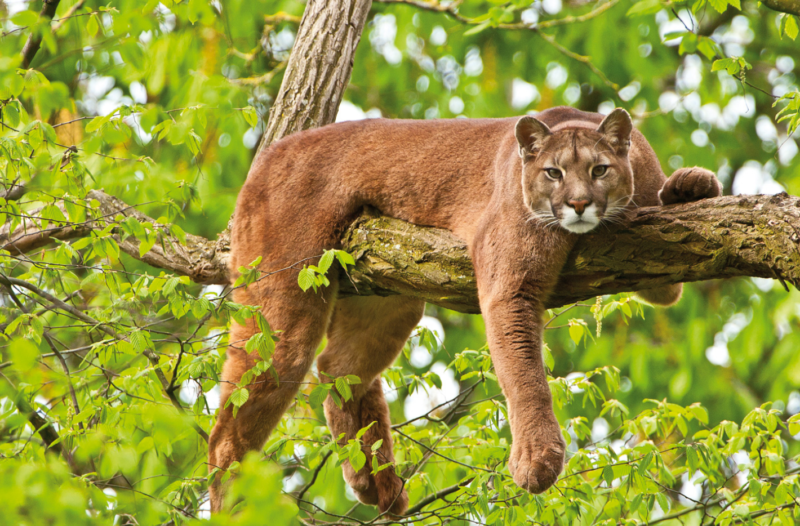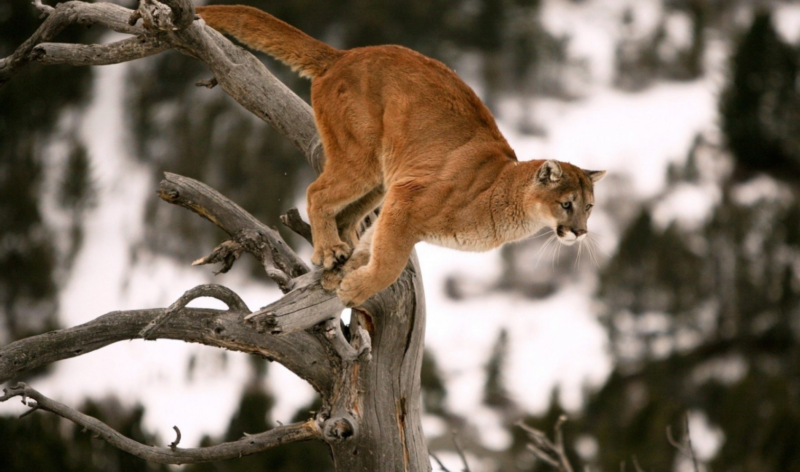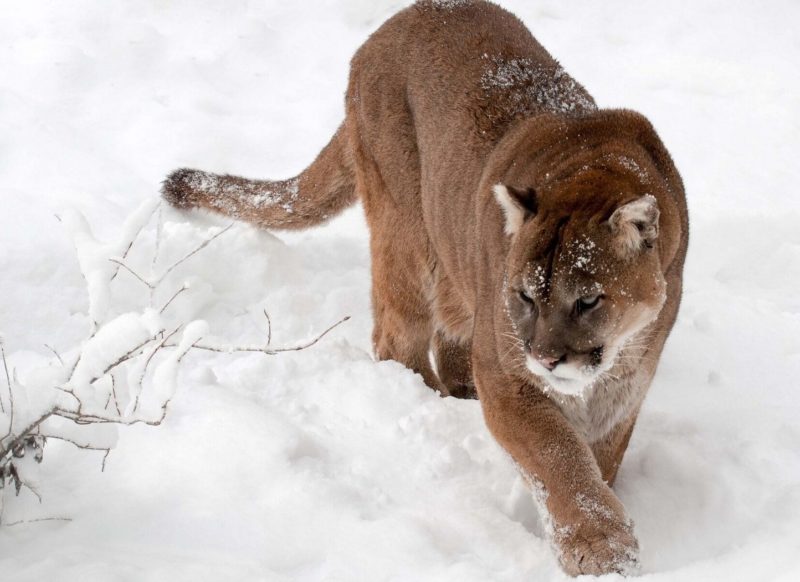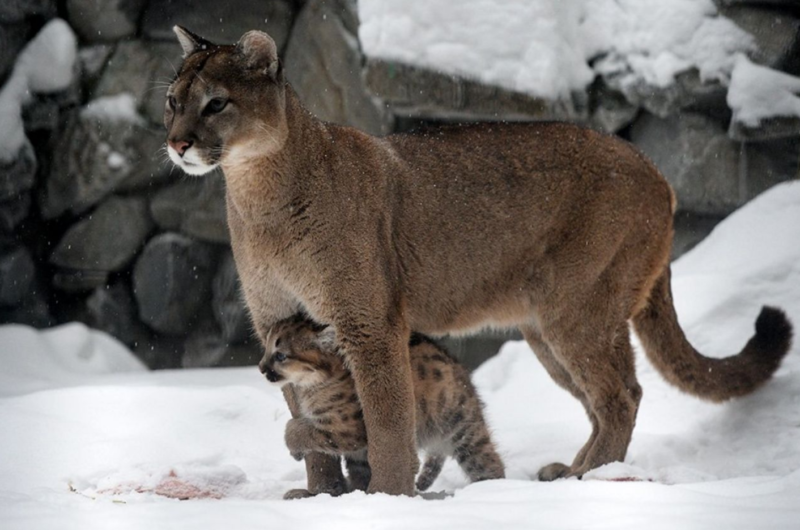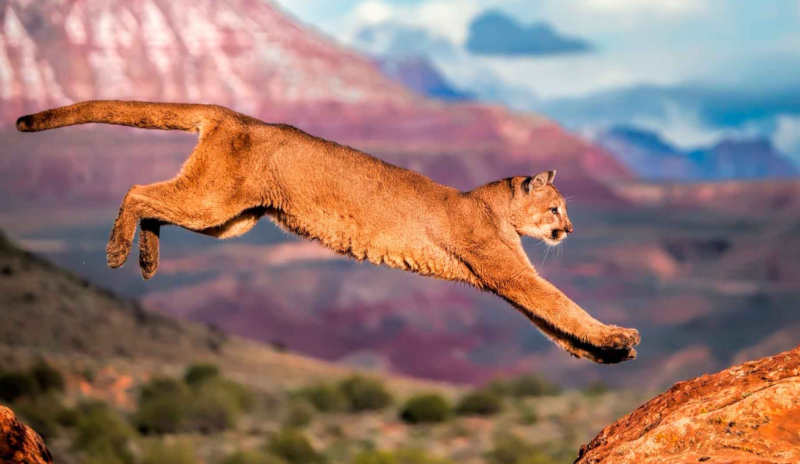In America, where the cougar lives, this beast has no equal in agility and speed. He often attacks alligators and prey, which is twice its own size. According to legend, predatory cats lived in houses of ancient Indians who once inhabited the American continent.
Material Content:
On which continents, in which countries does the cougar live
The Andes, stretching along the west coast of South America, are the longest mountain systems in the world. In these mountains there is a cougar - one of the largest cats in the Americas. It is also called a mountain lion or cougar.
The Incas revered these skilled predators. They prey on various inhabitants of the mountains, from small in size to the largest. These large cats are found in the Americas. They live in forest and desert areas, jungles and fields of north and south. In the United States and Canada, the cougar has survived only in the west, in mountainous terrain.
Description, size and life span
This large predator is part of the cat family, its height at the withers can reach 90 cm, and the body length with tail is 2.5 m. Males weigh 80–100 kg, females are slightly smaller.
The animal has a small head and a graceful, muscular body. The female's face is slightly narrower than that of the male. The fur is thick, short, plain grayish-brown. There are black marks on the tail, muzzle and ears, and white spots on the belly and chest.
In nature, cougars rarely live to old age. In those places where they are allowed to hunt, they are massively killed by bullets. Animals also die from diseases or wounds; sometimes they fall under the wheels of cars.
The average lifespan of predators in nature is 10–12 years.If the cougar lives in a zoo, she can live up to 20 years.
Predator lifestyle
Cougars - loners with huge hunting sites. They prefer to hunt in the evening, at night, or early in the morning. They hide prey under leaves or snow. And after a long night hunt, they sleep in the den. They are able to climb trees and swim perfectly.
Animals are adapted to life in open, rough terrain, they easily move along the mountain slopes. Leaving fragrant marks on the branches of trees and stones, thus designate their territory. The area of the puma largely depends on the density of habitat of the game, the size of the hunting area ranges from 30 to 1000 km2.
Cougars do not know how to make a growl and roar due to their special physiological structure. These are silent animals. Females during the mating season emit loud screams, communicate with the kittens in quiet, gentle sounds. In addition, animals can purr and rumble like domestic cats.
Nutrition in the natural habitat
In the spring, the cougar preys on the Magellan geese and rhea. The most irreplaceable animals are hares, an inexhaustible source of food. In addition to small individuals, guanaco is included in the diet of the predator.
He hunts, as a rule, at night, but he will never miss a gaping prey during the day.
Cougars consider sheep herds to be an excellent target for hunting, but farmers are hostile to this. Hunting for cougars is prohibited in Chile, but flock owners are ready to break the law by protecting their sheep, sometimes they offer a reward for the head of the cougar.
Breeding and rearing offspring
Pumas have puberty at about 2 years old, they are looking for a couple when they have their own hunting area. Mountain lions can breed at any time of the year. The male does not take part in raising offspring. Typically, kittens are born in the spring. In preparation for the appearance of the cubs, the female arranges shelter in a cave, between stones or among thickets. After a 3-month pregnancy, 2-3 blind kittens weighing about 0.5 kg appear. They have fur in black-brown spots, it becomes lighter from 3-4 months of age. And then the spots disappear altogether.
Kittens quickly gain weight in the first weeks of life, 15 days after birth, their eyes and ears open, they begin to crawl actively. The puma goes on a hunt and brings meat to the lair, and from the age of 2 months begins to take the babies with them, they stop drinking mother’s milk at 2-3 months. Together with their mother, young individuals continue to hunt for another 1-2 years.
Interesting facts about the cougar
This is a very beautiful and graceful cat.
Studying this animal, you can find out many interesting facts:
- Cougar milk is about 6 times fatter than cow's milk;
- the cougar communicates with her kittens with gentle sounds similar to birds chirping;
- the cubs do not leave the shelter until they hear the call of the mother;
- With special outgrowths located on the tongue, the predator helps itself to break prey;
- in order to survive, one puma per year needs to eat about 1 thousand kg of meat.
In pre-Columbian America, cougars inhabited the southern and northern parts of the continent; they were revered by the Indians as sacred animals. Currently, these beautiful predators can only be found in protected parks in western America, among the mountains. Despite the prohibition of shooting, they are killed by farmers.


